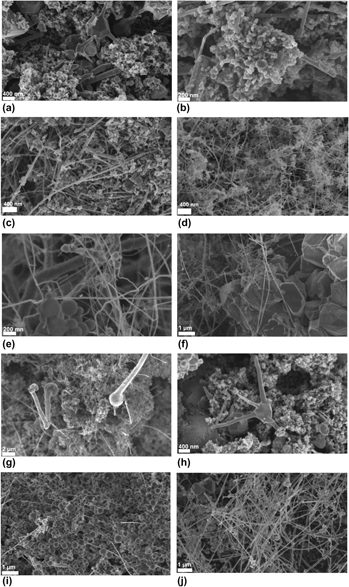Crossref Citations
This article has been cited by the following publications. This list is generated based on data provided by
Crossref.
Dąbrowska, Agnieszka
Huczko, Andrzej
and
Dyjak, Sławomir
2012.
Fast and efficient combustion synthesis route to produce novel nanocarbons.
physica status solidi (b),
Vol. 249,
Issue. 12,
p.
2373.
Valentín, L. A.
Betancourt, J.
Fonseca, L. F.
Pettes, M. T.
Shi, L.
Soszyński, M.
and
Huczko, A.
2013.
A comprehensive study of thermoelectric and transport properties of β-silicon carbide nanowires.
Journal of Applied Physics,
Vol. 114,
Issue. 18,
Soszyński, Michał
2014.
Warstwy nanokompozytowe węglowo-palladowe. Badania i technologia.
Huczko, A.
Kurcz, M.
Dąbrowska, A.
Baranowski, P.
Bhattarai, A.
and
Gierlotka, S.
2014.
Self-propagating high-temperature synthesis (SHS) of crystalline nanomaterials.
Journal of Crystal Growth,
Vol. 401,
Issue. ,
p.
469.
Dąbrowska, A.
Bzymek, A.
and
Huczko, A.
2014.
In situ diagnostics of the SiC nanostructures growth process.
Journal of Crystal Growth,
Vol. 401,
Issue. ,
p.
376.
Soszyński, Michał
2014.
Warstwy nanokompozytowe węglowo-palladowe. Badania i technologia.
Huczko, Andrzej
Dąbrowska, Agnieszka
Łabędź, Olga
Soszyński, Michał
Bystrzejewski, Michał
Baranowski, Piotr
Bhatta, Rita
Pokhrel, Balram
Kafle, Bhim Prasad
Stelmakh, Swietlana
Gierlotka, Stanisław
and
Dyjak, Sławomir
2014.
Facile and fast combustion synthesis and characterization of novel carbon nanostructures.
physica status solidi (b),
Vol. 251,
Issue. 12,
p.
2563.
Huczko, Andrzej
Kurcz, Magdalena
Dąbrowska, Agnieszka
Bystrzejewski, Michał
Strachowski, Przemysław
Dyjak, Sławomir
Bhatta, Rita
Pokhrel, Balram
Kafle, Bhim Prasad
and
Subedi, Deepak
2016.
Self‐propagating high‐temperature fast reduction of magnesium oxalate to novel nanocarbons.
physica status solidi (b),
Vol. 253,
Issue. 12,
p.
2486.
Soszyński, Michał
and
Huczko, Andrzej
2016.
Carbon Nanomaterials Sourcebook.
p.
159.
Kurcz, Magdalena
Soszyński, Michał
and
Huczko, Andrzej
2016.
Nanophysics, Nanophotonics, Surface Studies, and Applications.
Vol. 183,
Issue. ,
p.
559.



